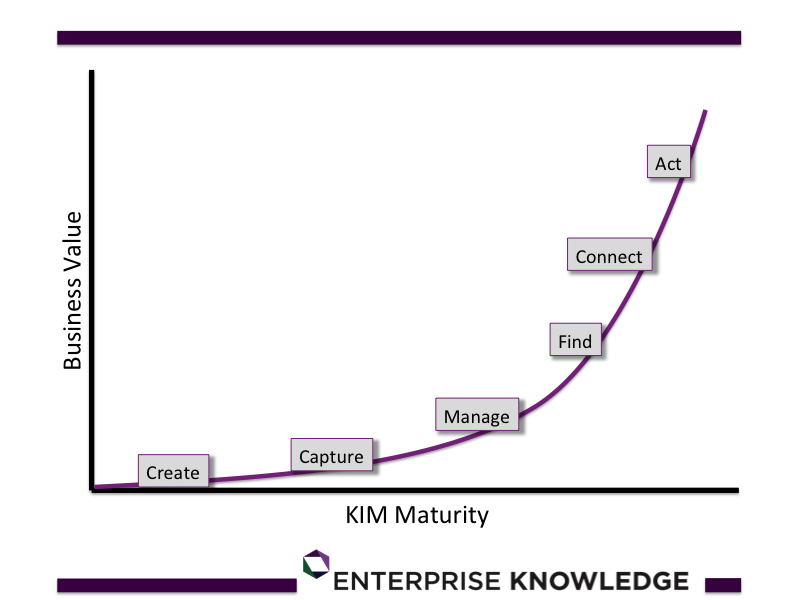Over our years of knowledge management consulting and information management consulting, our clients often ask what the difference is between KM and IM. A few simple online searches show similar queries run amok. My experience, frankly, is that the definitions of KM and IM as well as the difference between the two differs drastically depending on whom you ask.
Professor Thomas Davenport lays claim to one of the earliest and still most frequently leveraged definitions of KM, stating, “”Knowledge management is the process of capturing, distributing, and effectively using knowledge.” The Gartner Group, stepping away from drawing magic quadrants for a moment, added the following similar but more detailed definition, offering that “Knowledge management is a discipline that promotes an integrated approach to identifying, capturing, evaluating, retrieving, and sharing all of an enterprise’s information assets. These assets may include databases, documents, policies, procedures, and previously un-captured expertise and experience in individual workers.”
A countless number of other definitions exist, ranging from the largely academic focus on people, process, and expertise to the largely consultative focus on collaborative and social technologies. The general theme that can be derived, in my opinion, is that KM is about identifying and capturing all of the information an organization and its people possess and then managing and presenting it such that it may be used and reused to the greatest extent possible, forming new relationships and connections along the way. At Enterprise Knowledge, that’s certainly been our focus and the derivation of many of our concepts around Practical Knowledge Management.
Defining IM is generally a bit cleaner. AIIM (Association for Information and Image Management) endorses Wikipedia’s definition of Information Management as, “the collection and management of information from one or more sources and the distribution of that information to one or more audiences.” Though it doesn’t have to be, IM is more commonly associated with specific technologies such as content management, document management, records management, and data management systems.
Where the above definitions and concepts often tend to lead people is that KM is a broader set of practices than IM is. Many would argue that KM exists as two overlapping spheres, one being the capture of tacit knowledge (translating it to explicit knowledge that can then be managed as information) as well as the behavior change and development of processes to support that tacit knowledge capture and the second being the management and presentation of that information (more the “traditional” IM part).
I’d prefer to offer a different interpretation, however. Simply put, it doesn’t matter. I’m sure that statement will cause a bit of heartburn for many in the KM field, but I view this as a statement of clarity, not the other way around. Others may argue that KM is a component of IM or vice versa. Over my decades of consulting, my experience is that the most successful projects on which I’ve worked have been the ones that offered a holistic project approach that considers people, process, and technology over the entire lifecycle of information. That to me is Knowledge and Information Management (KIM).
Regardless of what you may choose to call it, this is the approach that Enterprise Knowledge takes on all of our initiatives. We’ve defined a KIM maturity continuum to help our clients understand the knowledge/information lifecycle and identify the range of potential tools, technologies, processes, and methodologies that may support their goals.

What EK’s KIM maturity represents is an understanding that no single concept, process, project, or technology will fully solve an organization’s enterprise knowledge challenges, but if conducted properly with an enterprise end-state in mind, each may help progress an organization to greater KIM maturity. This is where our Agile philosophies come in to recognize that KIM maturity isn’t attained via a single colossal initiative, but rather through a series of coordinated and calculated business-centric efforts that act as building blocks. The keys to this realization are threefold:
- Defining a vision for what KIM maturity looks like in your organization and what tangible business value it will yield;
- Possessing the KIM expertise and complementary technical acumen to define and follow an iterative roadmap, based on high business value projects acting as foundational components to achieve your KIM to-be state; and
- Engaging management and the business at every step of the process, on an ongoing basis, to ensure business value and return on investment are ingrained in every decision made.
Do you need help leveraging KIM to achieve true enterprise knowledge? Contact us.
Davenport, Thomas H. (1994), Saving IT’s Soul: Human Centered Information Management. Harvard Business Review, March-April, 72 (2)pp. 119-131.
Duhon, Bryant (1998), It’s All in our Heads. Inform, September, 12 (8).
